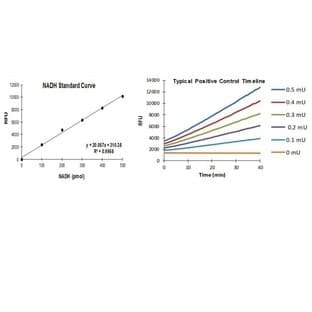
Supplier:
Alomone Labs Limited.Cat no: STM-340
BUY Maurotoxin
MTX activity was extensively assayed on a large array of K\\+\\ channels, including K\\ca\\ (K\\ca\\1.1, K\\ca\\2.1, K\\ca\\2.2, K\\ca\\3.1), Kv1 (K\\v\\1.1, K\\v\\1.2 and K\\v\\1.3) and Shaker B K\\+\\ currents.
MTX inhibits the binding of \\125\\I-Apamin and \\125\\I-Kaliotoxin to rat brain synaptosomal membranes with an IC50 of 5 nM and 30 pM, respectively.
Furthermore, MTX blocks KCNA1 (K\\V\\1.1), KCNA2 (K\\V\\1.2) and KCNA3 (K\\V\\1.3) expressed in Xenopus oocyes with an IC50 of 45 nM, 0.8 nM, and 180 nM, respectively.
Maurotoxin blocks Shaker-B K\\+\\ current with an IC50 of 2 nM. In contrast to previous reports, MTX was recently shown to have no effect on K\\ca\\1.1, K\\ca\\2.1 and K\\ca\\2.2 small conductance K\\ca\\ channels up to 300 nM in physiologically relevant ionic strength buffers, but rather produces a high and specific block towards K\\ca\\3.1 (IK\\ca\\1, SK4) and KCNA2 (K\\V\\1.2) with IC50 of 1 nM and 0.1 nM, respectively.
Furthermore, MTX was shown to block Gardos channel in human red blood cells and to inhibit the K\\ca\\ in activated human T-lymphocytes without affecting the voltage-gated K\\+\\ current encoded by KCNA3. Moreover, MTX inhibition was shown to be pH-dependent.
In conclusion, Maurotoxin seems to be a very potent blocker of both K\\Ca\\3.1 and K\\v\\1.2 channels.
Ion Channel Modulators; K\\+\\ Channel Blockers
Prices direct from Alomone Labs Limited.
Quick response times
Exclusive Absave savings/discounts
Latest promotions
Buy any polyclonal or monoclonal antibody from our extensive range of pre-made antibodies and for a limited time only receive a $50 discount!(T&C apply:...
New brilliant antibodies, and new lower prices!For flow cytometry reagents in general, \"bright is better.\" The violet-excitable BD Horizon™ BV421 and...
10% Discount on 2 Rabbit Polyclonal Antibody Service. With over 20 years experience, SDIX has developed into the premier US custom antibody producer,...
For the past decade scientists have extensively used ATS secondary toxin conjugates to make their own targeted toxins for in vitro use.The ability to combine...
We're so sure that you'll prefer Cayman Assay kits over your present brand that we're willing to give you a free assay kit to prove it!
Did your supplier increase the price of Fetal Bovine Serum? Did they substitute the US Origin with USDA? Well say no more! Innovative Research is still...
Bulk Cytokines with Custom Vialing.20 - 50% off cytokines, growth factors, chemokines and more...For a limited time Cell Sciences is offering substantial...
Are you planning to have a customised antibody made for your research?Since 2000, Everest has been producing a catalog containing thousands of affinity...
Top suppliers
Agrisera AB
11 products
Biotrend
Biosensis
969 products
ABBIOTEC
3011 products
SDIX
1 products
Spring Bioscience
2291 products
Cell Signaling Technology
4976 products
Rockland Immunochemicals, Inc.
7592 products
Boster Immunoleader
1533 products
OriGene Technologies Inc.
5281 products
Maine Biotechnology Services
227 products
BD (Becton, Dickinson and Company)
1 products
ABNOVA CORPORATION
Randox Life Sciences
1502 products
















